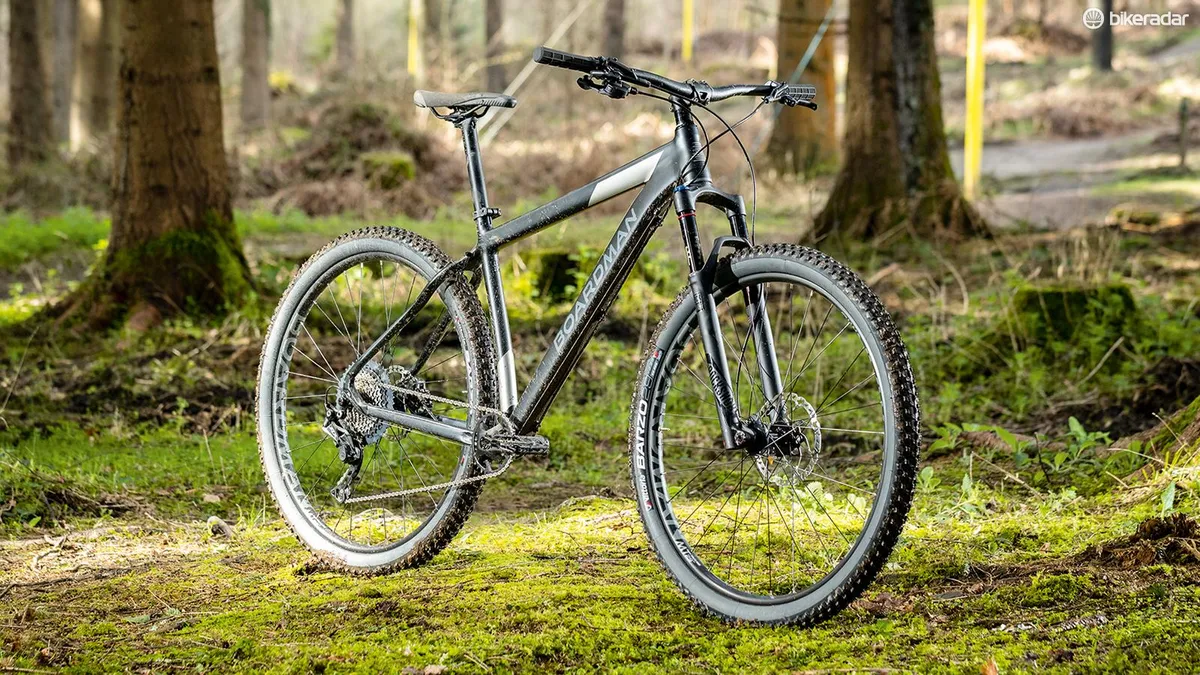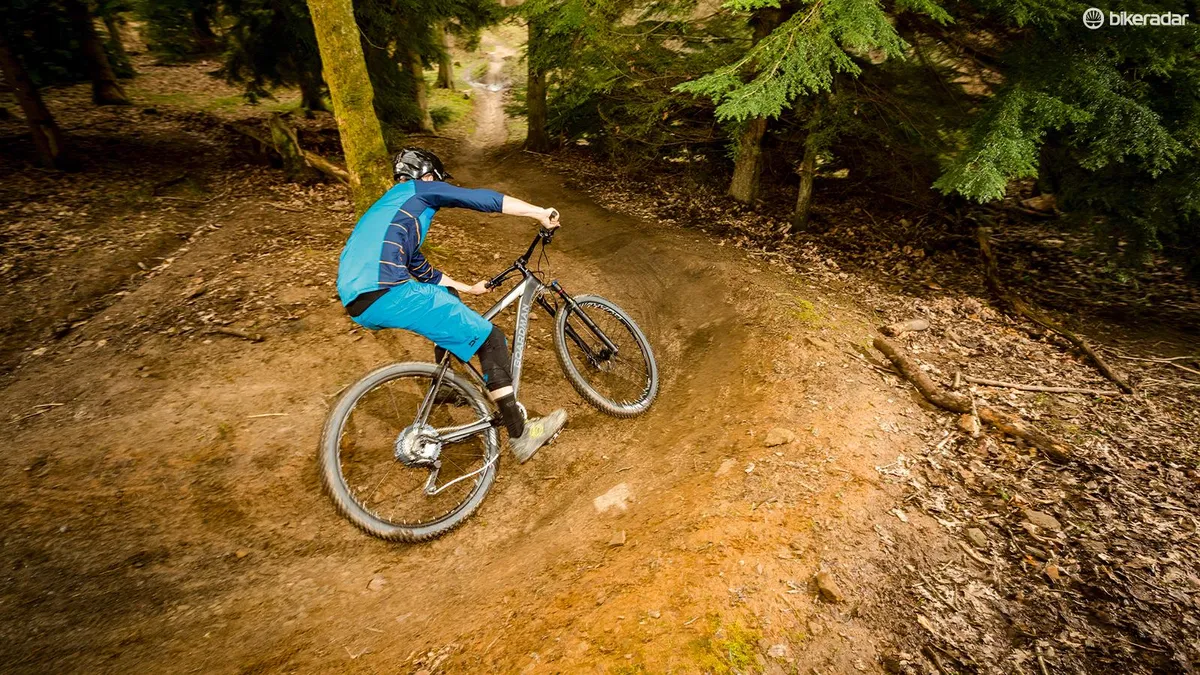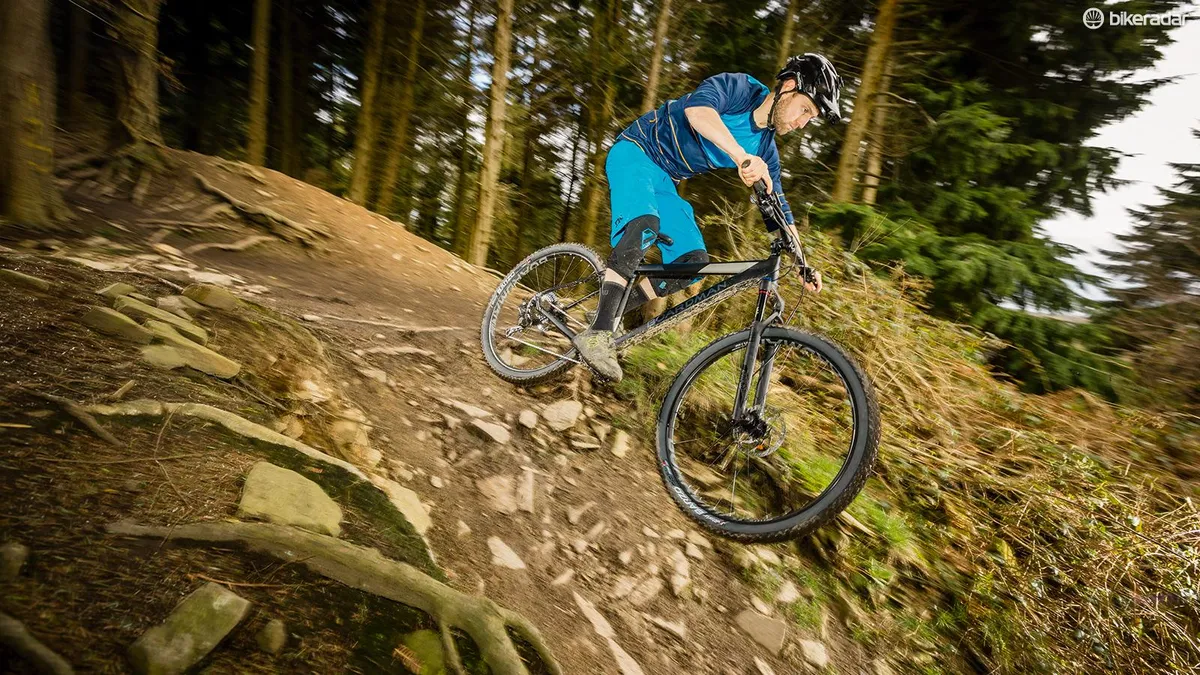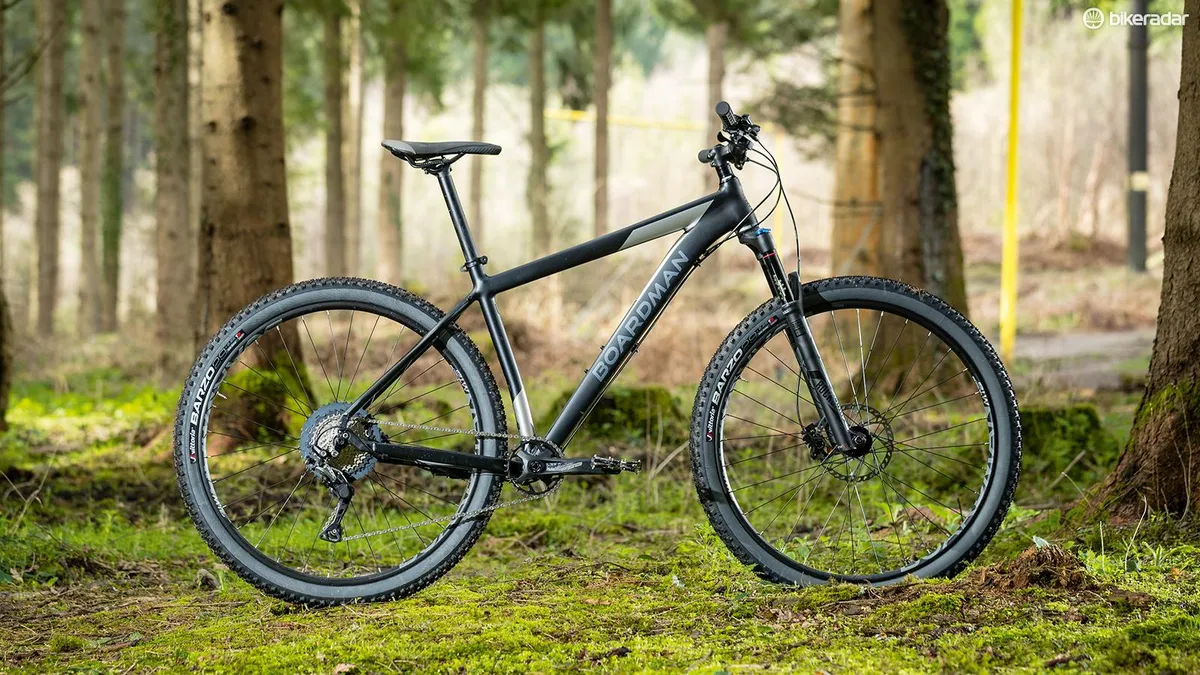Boardman’s rework of its big-wheeled, high-speed trail hardtail the MHT has been subtle, but then there wasn’t all that much that needed fixing.
The MHT frame is new and deftly mixes performance with practical durability. It’s got a short tapered head tube, smooth-welded main tubes and flat wishbone seatstays.
A curve in the seat tube brings the back wheel in tight, but there’s enough bottle-mount-free straight length to let you drop the seatpost low.
Running the gear cable ‘naked’ outside the down tube gives a clean shift feel, the screw-in bottom bracket is a durability boost and there are rack fixings too. The 67-degree head angle and 73-degree seat angle give well-balanced poise and steering, and the reach is okay (an extra 10mm would be even better).
Boardman MHT 8.9 kit

Boardman has got the aesthetics sorted. The understated black and grey of the frame is mirrored on the wide rims. Vittoria’s new Barzo tyres get grey sidewalls to complement the look, and their ‘TNT’ casing makes tubeless conversion easy.
The 120mm RockShox Reba fork has low-friction black stanchions. Even the Shimano SLX mech and cassette, with its 10 grey teeth and big black 46t crawler cog, are on point.
The 45mm stem gives instant steering correction through the 760mm bar, and the tapered lock-on grips make the excess upsweep less obvious.
Boardman MHT 8.9 ride impressions
It was obvious straight away that the MHT was in a different class to other bikes in the same price category also tested. It’s 2kg lighter (on average) than bikes such as the Diamondback Heist 3.0+, Jamis Dakar A2 and Voodoo Canzo, which is a huge benefit in terms of it feeling fit and healthy when you press on the pedals.
Light can mean flexy, but the Boost back end is shorter than that of the other bikes mentioned above and, along with the stiff, boxy mainframe, means it doesn’t squander any of your pedalling effort. Its hardwearing tyres, rack mounts and low weight make cycle-to-work duties less of a chore too.

The Boardman doesn’t just feel sharp through the pedals. Its M500 brakes are more communicative than the cheaper Shimanos you'll find on other bikes, and the straight-line external cable routing brings out the best in the SLX shifting.
With its bolt-through Boost axle, the Reba fork feels super-precise through the big bar and short stem. The slim grips, tight frame, firm saddle and fat seatpost turn feedback through the contact points from 1,080p to 4K, too.
Basically, the whole bike means serious business, compared to the chubby-tyred Diamondback and heavier, softer, more basically-equipped full-sussers.
Unsurprisingly, this tight ride means less comfort and compliance when you hit bigger lumps slowly, but even then, the Boardman isn’t a jackhammer. The fork is impressively composed on rocky descents, and the 29er tyres roll over roots and gaps that will stall smaller wheels. There’s room to fit 2.35in rubber if you want.
As it stands, the wide rims shape up the tyres enough to give decent cushioning. The tread and compound are enough to cope with most mud and muck, yet still feel swift on the road.

When the MHT does slip, the quick steering means you can catch most slides before they dump you. Taking a ‘harder and faster’ approach works surprisingly well for skipping through trouble.
Because speed is so easy to pick up, it’s easy to create an exhilarating upward spiral where the faster you go, the better the MHT feels. The 67-degree head angle and stiff front end and fork help it self-correct back onto target noticeably better than a steeper-angled bike. Obviously, there is a point where the skipping stops and the slamming starts, and it comes earlier than on a full-sus.
You’ll need to ride smooth and hover over the saddle to keep your back alive on longer, rougher rides too.
Comparing apples with apples, though, the Boardman feels nothing like a price-compromised ‘value’ bike and everything like a pedigree high-velocity trail hardtail that could easily cost double the price or more.

